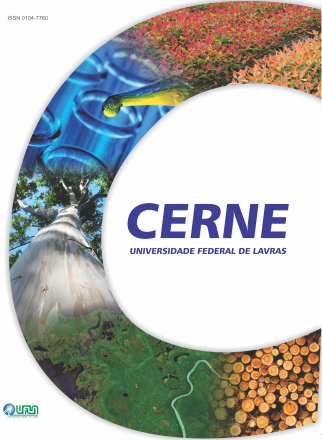CONSERVATION AREAS, POVERTY AND SOCIAL INEQUALITY: AN EVALUATION USING SOCIOECONOMIC INDICATORS IN MINAS GERAIS, BRAZIL
Cerne
CONSERVATION AREAS, POVERTY AND SOCIAL INEQUALITY: AN EVALUATION USING SOCIOECONOMIC INDICATORS IN MINAS GERAIS, BRAZIL
Autor Correspondente: Marco Aurélio Leite Fontes | [email protected]
Palavras-chave: Human Development Index, Gini Index, Nature conservation, Protected areas
Resumos Cadastrados
Resumo Português:
Neste estudo objetivou-se avaliar as possÃveis correlações entre os indicadores de desenvolvimento socioeconômico dos municÃpios do estado de Minas Gerais, Brasil, e a presença de unidades de conservação (UC), tanto de uso sustentável como de proteção integral. Os valores de Ãndice de Desenvolvimento Humano (IDH) e Ãndice de Gini (IG) foram comparados entre os municÃpios com e sem UC pelo teste não paramétrico Wilcoxon-Mann-Whitney. Testaram-se as correlações entre IDH e IG de cada municÃpio e suas áreas ocupadas por UC através do teste não paramétrico de correlação de Spearman. Identificaram-se 560 UC nos 853 municÃpios do estado. Os municÃpios com UC não apresentaram IDH significativamente diferentes dos demais, mas encontraram-se diferenças significativas nos valores de IG, superiores nos municÃpios com UC. Não se encontraram correlações significativas entre os IDH dos municÃpios e suas áreas ocupadas por UC. Mas encontraram-se correlações significativas entre IG e as áreas ocupadas por UC, associando as UC a maiores desigualdades socioeconômicas. Deve-se incorporar as populações aos esforços de conservação por meio de programas que as beneficiem, em especial o pagamento por serviços ambientais, entre outras estratégias conservacionistas.
Resumo Inglês:
The objective of this study was to evaluate the possible correlations between the socioeconomic development indicators of the municipalities of Minas Gerais, Brazil, and the presence of both sustainable use and full protection conservation areas (CAs). The Human Development Index (HDI) and Gini Index (GI) values were compared between municipalities with and without CAs using the non-parametric Wilcoxon-Mann-Whitney test. The correlations between the HDI and GI of each municipality and its areas occupied by CAs were analyzed using the non-parametric Spearman correlation test. A total of 560 CAs were identified in the 853 municipalities of the state. The HDI values of municipalities with CAs were not significantly different from those of other areas, but significant differences were found in the GI values, which were higher in municipalities with CAs. No significant correlations were found between the HDI of municipalities and their areas occupied by CAs. However, significant correlations were found between the GI and areas occupied by CAs, suggesting that the CAs are associated with greater socioeconomic inequalities. Populations should be included in conservation efforts through programs that benefit these individuals, such as payment for environmental services and other conservation strategies.

